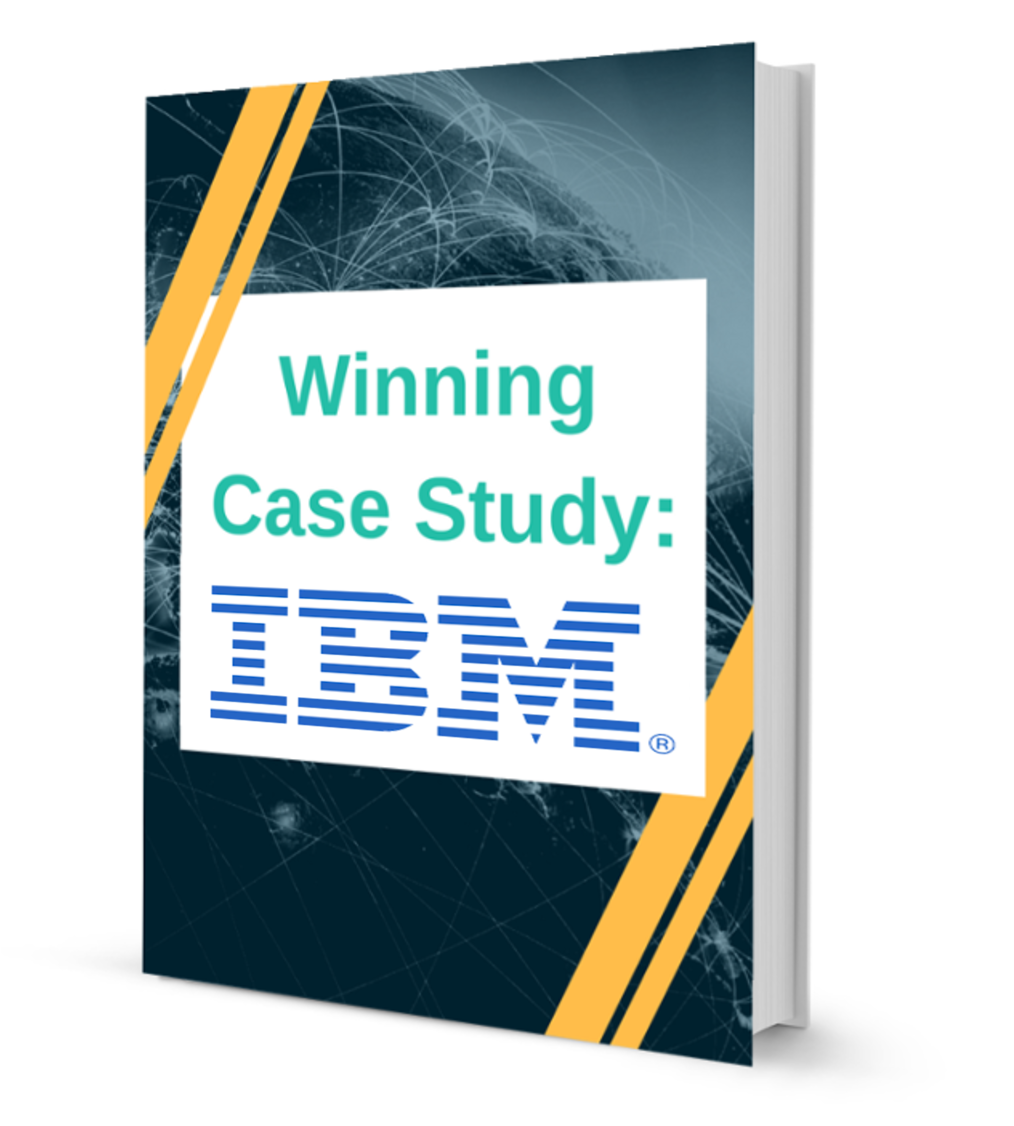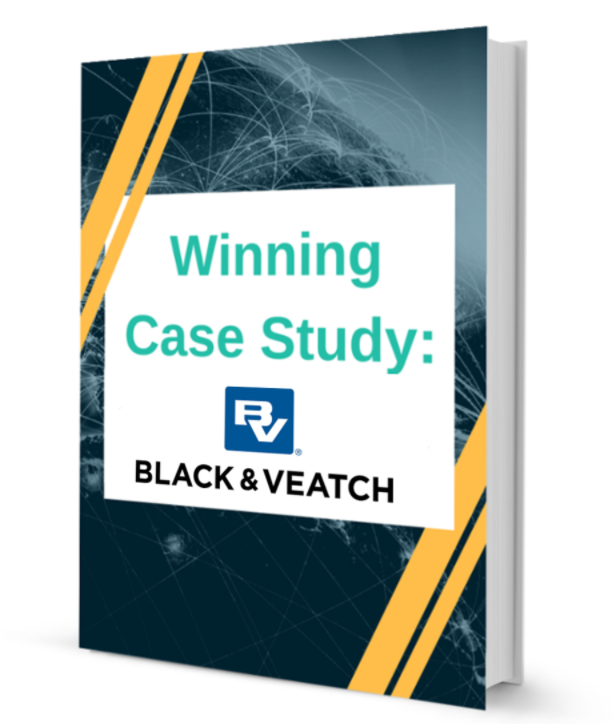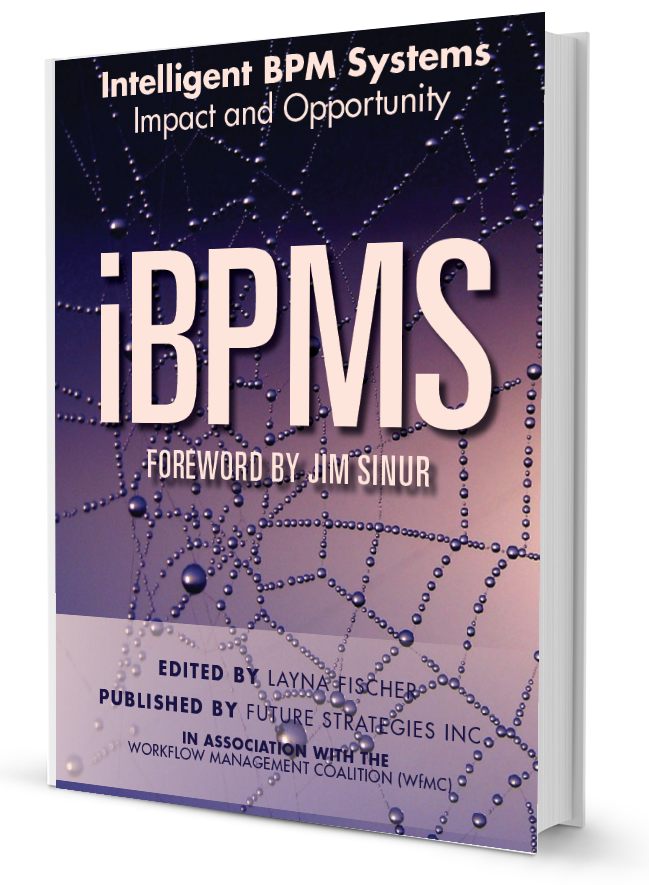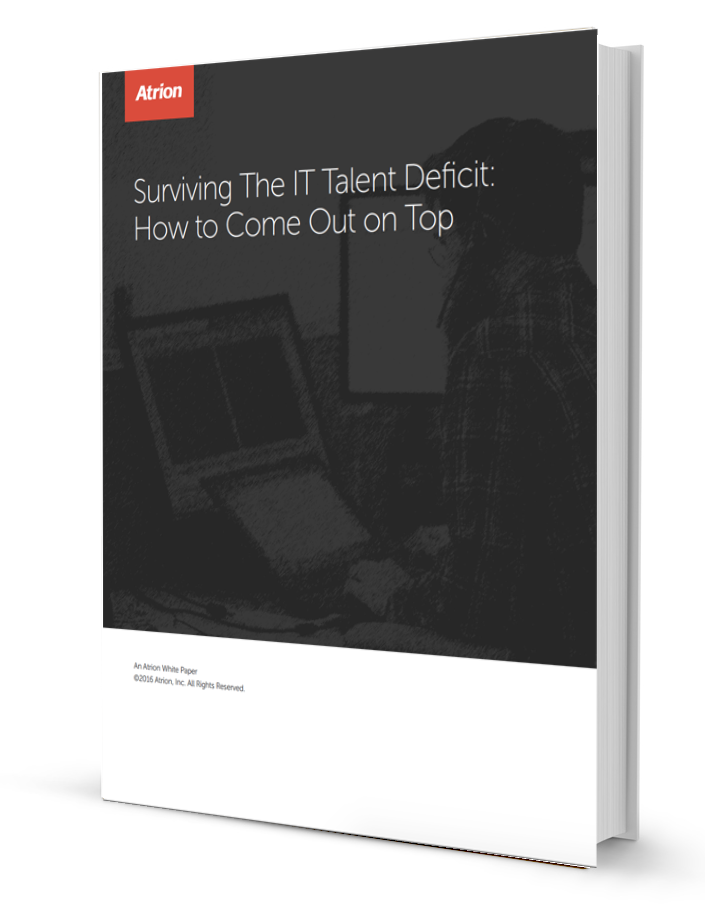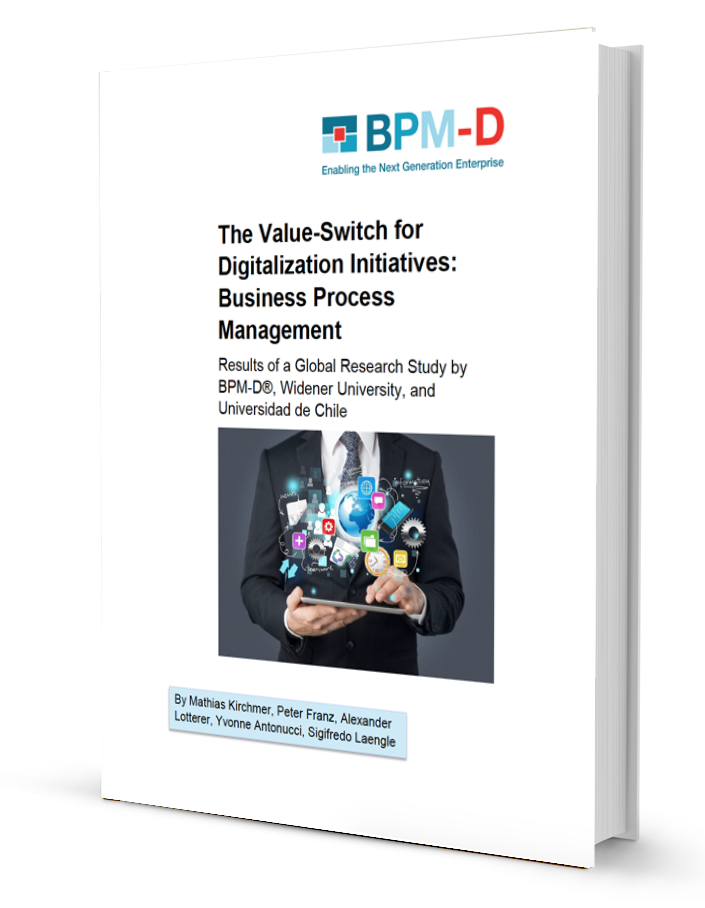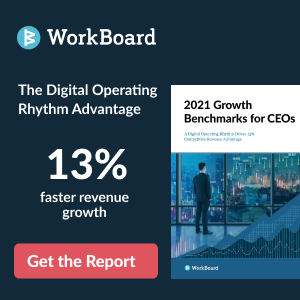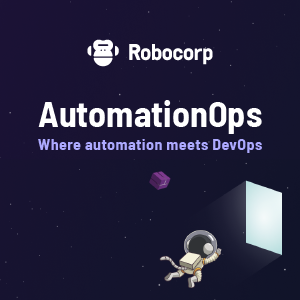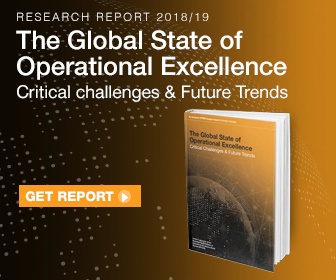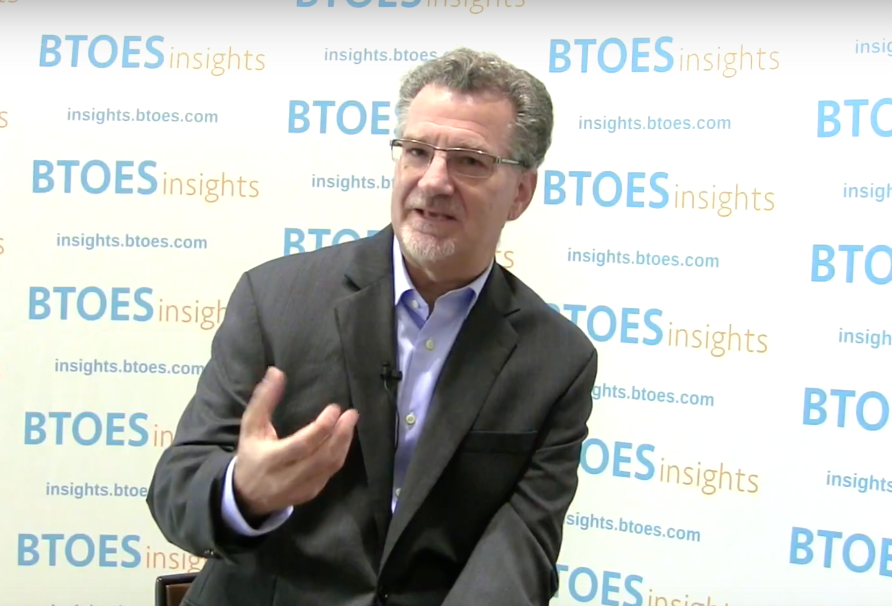Session Information:
RPA: Change Management Tool for Industry 4.0
Artificial Intelligence, Augmented Reality, Blockchain are key components of Industry 4.0 and each technology has its benefits. Unfortunately, most organizations are not ready for these digital solutions due to lacking infrastructure, data, cultural mindset or business case validation.
I would suggest ALL firms are ready for Robotic Process Automation (RPA) and implementing this technology is a great change management tool to enable Industry 4.0.
My presentation will provide the following:
- Why RPA is viable for all companies
- Why RPA will improve your Industry 4.0 success
- Real world example of using RPA as a change management tool to win the “hearts and minds” of employees to support Industry 4.0
Session Transcript:
Excellence and innovation, like how Dean from Electrolux, who's joining us today. How welcome, and the very excited to have you here with us. I'll do a brief bio on how he's, the Director of Global Digital Industrial Operations for electrolux, has over 20 years of experience leading digital transformation for for, for Fortune 100 companies, all the way to startups.
Has to, successful education non-profits, focus on nurturing the next generation of innovators. And recently completed a U S Navy Seals Training Program. All right, guys, the whole package, though, massive how, And I'm very much looking forward to your presentation.
You are the prototypical the leader that I talked about just in my previous session. So it's a real pleasure to have you here with us.
All right, thank you for everyone. Thank you for having me. And thank you, everyone.
OK, so, So, So I'm going to spend the next few minutes talking about how I used the RPA, robotic process automation to enable Industry four.
So, with that said it, just some quick background about myself. As Jose mentioned, I spent the past 20 something years leading digital transformation for various companies. And these are the companies that I work for, work with, to drive digital transformation. Part of digital transformation is RPA and industry four. So the cockpit, I'll be sharing with you is my real-world experience doing those types of deployments with some of these companies.
So with that said, some of the key takeaways that I want you to get from my presentation, is, always show that, right now, is the time for companies to deploy RPA.
And I'll walk you through the rationale behind that, Also share with you why, when you deploy RPA, it is a great tool to use to leverage for your industry four projects. And then lastly, walk you through a few examples of how I use RPA to enable success on my industry, four projects.
So let's first start out and talk about what exactly is Industry four. So, if you see on the chart here, you'll see that we were going through four, will actually gone through three Industrial Revolutions and we're going to work when The first one was back in the day when we introduced the steam. And water Our Into, our factories into two point O is when we started doing Mass productions are finished goods using electric power. And Energy three point O is where most companies are today, where we automate our production lines, we have computers IT systems and robots helping us produce the widgets that we need for for our customers.
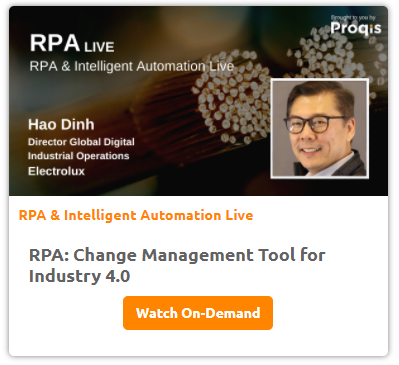 And in Industry four point always, where everyone wants to go to these days, which the concept around Smart Factory.
And in Industry four point always, where everyone wants to go to these days, which the concept around Smart Factory.
And where we use new technologies such as machine learning, which is artificial intelligence, the Internet of Things, which is smart sensors. And they really want automation systems inside our organization or inside of our families.
So what's really driving Industry four? There's various technologies out there that are enabling us to do industry four. And here is some, some, some chart chart in a vine or identifying some of these technologies. Artificial intelligence is a big one. This, these days, I added manufacturing, or three-d. printing is another big one, and the Internet of Things is something that I've worked with, with the copies around deploying associated with each T four.
And why exactly are companies investing this time and effort to deploy these types of technologies?
When we look at a survey or research that was done by Boston Consulting Group, you see here that for various industries in this case, they looked at the benefits of Industry four For the automotive industry, the food and beverage, the components and the machinery industry, and then the group, everything else, and to others.
You'll see here that a range of 10 to 30% productivity gains is associated with Industry four projects. And all of us are aware, when you have productivity gains, you get a chance to lower costs, and when you lower cost, you get a chance to improve your profits for your organization. So, 10 to 30% reduction in cost is substantial for any organization.
But before we start, talking about how great industry. four is again, BCG, Vis a vis a study and realized that unfortunately, there's only about 30% of digital transformation projects. and Industry four is considered a digital transformation.
Only about 30% of those projects actually deliver on the value that they promise. That means 70% of projects associated with Industry four are not delivering the 10 to 30% productivity gains that that was mentioned earlier.
And then, from my past experience, the reason, or the main reason why Issue four projects are successful is the fact that, unfortunately, a majority of companies out there are still running the organization on paper, and also running it, using manual processes.
And, if you look at the various technologies that I just showed you associated with HD four point O, you need digital data in order to have successful industry for projects. If you don't have digital data for artificial intelligence, then, the, the analytics associated artificial intelligence aren't very powerful. If you don't have digital data that is generated from the Internet of Things, then, again, you will have successful Industry four project. So, the underlying factor that is needed to have successful industry for rental projects, is to have visual aid.
So with that said, if you're trying to deploy an Industry four project, and an organization that is still running most of their operations on paper, or manual, you're really pushing a rock up the Hill. And I've done that for a few of the companies that I work for, now, learn from that. So why don't want to highlight today is, this is where RPA can come in and really help HD for projects. Because when you digitize processes, you actually generate the digital data that is needed for Industry four.
 So, so keep that in mind. RPA is a great tool to use to again enable Industry four, because it generates the digital data that's needed.
So, so keep that in mind. RPA is a great tool to use to again enable Industry four, because it generates the digital data that's needed.
And also, I want to highlight that, now is the best time for companies to deploy RPA solutions.
And the reason why I say that is, first of all, if you look at a study that was done by McKinsey, you'll see that they went out and look at odd occupations and jobs that are, you know, that are out there in the world.
And on average, 60% of the jobs that are out there, the occupations that are out there, is, prime for some, digitalization using RPA.
And within that 60%, each one of those jobs, they're listed, about 30% of the processes that are associated with that job, again, has an opportunity to be digitized via RPA.
So this highlights the fact that there is ample opportunity in organizations, no matter what type of occupation that you have, to deploy some digitalization around your manual, paper processes.
Also want to highlight that, now is the right time, because we've got proven RPA solutions out there.
Look on the left-hand side, you see a guard or work that shows the various types of RPA. Solution providers out there. And I've had a chance to work with a few of these and I can tell you, these are proven solutions and also the thing that these organizations have done around RPA is they develop either low code or no code solutions where you don't have to be digital or IT to deploy RPA, You can actually have your business owners develop their own RPA process solutions. So with the solution is being available, easy to deploy RPA solutions, as McKenzie mentioned, there's a return on investment associated With majority of the jobs and occupations out there, for RPA now, is the right time to deploy RPA.
So what I'm going to do next, or for the remainder of my presentation, is walk you through a few examples of how I've deployed RPA. And most importantly, how I use RPA to enable me to succeed with industry four projects.
But before we do that, let's actually talk about, some term a terminology now want to use, going for, called digital fluency.
So, if you look at this chart, digital fluency is a terminology that essentially has come up with to define, how do our employees engage with our digital solutions, right. How do they engage with RPA? How do they engage with artificial intelligence. And if you look at the way they define digital fluency, you'll see that there's four major components. And really, only one of those components is related to technology, which is in orange.
The other three main areas around driving digital fluency is around the change management associated with new projects.
It's really getting your employees enthusiastic about that digital solution, Getting them, realizing that, yeah, there's benefit for me If I deploy and use that digital solution, and most importantly, making sure that they are trained and skill. You actually use that digital solution, so, keep in mind, this concept of digital fluency, because I'll share with you how I use that as I deploy RPA. And also use RPA to enable better successful initiative for projects.
Let's take an example, where I went to an organization, and I wanted to start implementing artificial intelligence solutions, And what usually happens, is, when you first start talking about artificial intelligence, you know, organization had never really thought about it.
There's an underlining understanding that needs to be understood, to show, to really understand. It is an artificial intelligence, right?
The audience needs to understand that, in order for AI, to be beneficial, if you need a lot of big data, a lot of digital data, it also is a opinion, a lot on algorithms and statistics. So, again, the audience needs to understand a little bit about how AI uses mathematical statistics you come up with is forecast prediction.
And, as you were having these types of conversations around big data, mathematical, statistics, and so forth, is very confusing for, or an organization that is really not focus, and this type of area.
So, what I've been able to do in the past, and actually, one of my key learnings is, find an area that you want to deploy artificial intelligence in. And look, at first, before talking about artificial intelligence, Why don't you go in and actually deploy RPA for that area?
And by doing so, you do a couple of things that prepare the organization, or that, that, the discussion around AI, you start collecting digital data that is needed for successful AI projects. And most importantly, you start educating the area of the business and improving their digital fluency. So that when you finally bring up this more complex idea of AI and they're more, they're more open to a more absorbing around supporting it and deploying that AI project.
So let's go through a real-world example.
In this case, I want you to do AI associated with sales forecasting. But before I talk about artificial intelligence, I look at the process. That organization I was in around sales forecasting. And I can tell you this is probably what's happening in most organizations. The way they collect Salesforce casting information is very manual paper. Based in this organization, we had people going around collecting sales information on a sheet of paper. And then after they collected that information, they manually enter information into the computer, sent out the information to various people. And then the various people had their own Excel pivot tables to go, you do the forecasting around sales.
As you see, a very inefficient process and something that is ripe for RPA.
So I went in and actually training the sales team using a, a low code, no code, RPA solution. So that they actually built a digital, an automated process around collecting sales, forecasting data where now instead of a sheet of paper they have a digital form.
-1.png?width=600&name=Email%20Graphic%20Virtual%20Conferences%20(4)-1.png) That anyone with access to a laptop, A, I and a smartphone. And now use that want to start collecting sales information. So information that can be fed into standard reports that now can be generated on the fly Will ... in sales forecast information.
That anyone with access to a laptop, A, I and a smartphone. And now use that want to start collecting sales information. So information that can be fed into standard reports that now can be generated on the fly Will ... in sales forecast information.
So if you compare the RPA solution digitized and automated with the paper process, definitely a, an ROI associated with, again, getting quicker, faster, and better sales, order, effective sales forecasting data, and you digitize the sales data.
And thirdly, you've actually taken the sales team and increased their digital fluency.
And getting in the realize that, hey, this digital solution, RPA is benefiting me and I'm scared to go and develop my own RPA solutions. And I'm benefiting from this digital solutions, increasing the digital fluency.
So now you have an organization that has digital data and it has a stronger digital fluency, and now it is the right time to go in and talk about artificial intelligence. So now I'll go to the sales team and say, hey, we've been able to take this paper process digitized, it actually, I didn't do that. You did this, use RPA to digitize your sales forecasting data collection process. And then you have your sales forecast, develop you in a report.
But you know, we have this thing out there called artificial intelligence. And right now, you're limited to say, three months of historical data. Because, unfortunately, as a human, you all can only look at so much past data and interpret it to actually help you determine your sales forecast.
Also, right now, you have about five parameters that you use to help you, again, complete your sales forecast when we incorporate artificial intelligence, because the data's now digitized. Because of the RPA process, we can now use three years worth of data. Because AI is strongly enough now to take more data than we can easily possibly look at. And then use that as our information to develop our Sales Forecast. And on top of that, AI is a piece of software, where it's not limited to the five parameters that we use as humans to use forecasting. We can now expand it out to, say, 10 to 15 different parameters that we can use to determine, you know, how these certain parameters affect our sales forecast. So, now, using AI, you'd have better sales forecast, because you have three years worth of data that you're looking at, and about. three times the amount of parameters that you could look at past. But now, AI, you can do, you can use a lot more parameters.
And this type of discussion is only, was only enable, because the team that was, you know, doing the sales forecasting before, their digital fluency has increased, so that now they understand the RPA, The power of technology. So when I brought into discussion on AI or America, they are more open and educated, can have that discussion around how AI can benefit them, and then, as I mentioned before, RPA, digitizes the information. So, now on a digital data is exactly what you need to have accessible project.
So, that's the example associated with sales forecasting.
Let's take one more example that, I did an organization where I wanted to bring in the Internet of Things, right? The internet of Things are sensors that provide you very powerful digital information.
So, this use case is associated with inventory management.
Again, very similar to our sales forecasting, This is a different organization. But they had a very manual, paper based process, where some, where someone would walk around a factory and collect all the finished goods, you know, work in progress with items on the raw materials and we use, and did it on a sheet of paper. I introduced the inventory management team to RPA, and they were able to build on their own, again, another digital entry form, where now all the inventory information is collected via an iPad, out in the factory floor.
Then, I click of a button, they're able to generate their inventory levels, are reports that shows, again, how much we're finished goods and raw materials they've used on a frequent basis.
Very powerful, similar to the previous example around sales forecasting, This inventory management team now has increased their digital fluency, and we've also digitize the information associated with the inventory so that we can generate these inventory, inventory level reports.
So, what I wanted to do now with this team is, I want to talk about how do we use IOT to make our inventory management better, and what we're, what I was able to do. Because now they understand this concept of digital solutions, and are open to looking at other types of digital opportunities.
.png?width=742&name=Screenshot%20(4).png) I've talked about, instead of having a digital manual or a digital process to entering your inventory information, why don't we sensors, the Internet of Things, sensors, in our production line, so that it can tell you real time how many finished goods you produce put sensors in our assembly line. So, that everywhere we have with the work in progress, it will tell you how much will we have in that area, the same line. And also, put some IOT sensors in our, our material usage area. So that, again, you get real-time information around how much materials you're consuming.
I've talked about, instead of having a digital manual or a digital process to entering your inventory information, why don't we sensors, the Internet of Things, sensors, in our production line, so that it can tell you real time how many finished goods you produce put sensors in our assembly line. So, that everywhere we have with the work in progress, it will tell you how much will we have in that area, the same line. And also, put some IOT sensors in our, our material usage area. So that, again, you get real-time information around how much materials you're consuming.
By having this IOT device there, you don't have to wait 32 an hour or someone to walk around the iPads to collect data for you. So then you can get your inventory levels with a click of a button because of the IOT device, You can get real-time inventory levels inside your plan.
Again, this isn't a will, because we were able to strengthen the inventory management teams, digital fluency, using RPA, And we also were able to start collecting digital data around inventory, at around RPA, and they show them that how IOT can make that digital connection, much more power.
So what I've learned, through my experience driving Industry four, and also RPA, is when you're trying to deploy an Industry four solution example at an artificial intelligence IOT, and you're getting a lot of pushback, because people who really don't understand what you're trying to do, then take a step back and see if there's an opportunity.
Which I think, there will be, there's an opportunity, in that focus area, to deploy RPA, if there is deploy RPA in that area.
Because by doing so, what you're going to do is you can start doing a digital data that you need for your H D four solution, and also you can improve the digital fluency of the people involved.
So that when you bring up the issue for zero solution, you will have better results, because they are more educated and enthusiastic about, that needs to be four solution and you have the digital data that you need to actually deploy that intuitive solution.
So just to quickly wrap up, as I mentioned earlier, on, the three things that I wanted to discuss with you. First is the fact that, right now is the time for organizations to deploy RPA. McKinsey has come out with the research, saying, hey, 6% of the jobs out there are ripe for RPA.
Also, their solution providers out there that have low code, no code solutions, where you can have non IT and non digital personnel develop the RPA solutions.
And so this type of ROI opportunity, and the solution readily available, is, again, indicated that RPA companies should be deploying RPA right now.
I've also share with you some examples of how I've used RPA as an enabler for HD four, right. Using RPA to build the digital fluency. The employees and organizations that there'll be more educated and open to, to the various types of technologies that you want to employ around East U four point, though.
So, that is all I had. And I want to thank you for your time. And if you want to learn more about the things I've done around digital transformation, please visit my website, ... dot me. Also, I love connecting with people via LinkedIn. Here's my LinkedIn link, or just look up, how did, and I look forward to Q and A and also connecting with everyone online. And that's all I have. Thank you.
Thank you. Thank you.
How great presentation really enjoyed the presentation and the example that you gave is such a wonderful example. I'm going to ask you to stop sharing your presentation to the audience, now, and I'm going to come back of the camera.
For us to be on camera at the same time.
All right. Where's that screen. Sharing tab on the right-hand side, and there is a button there that says Stop Sharing.
Yeah, that screen that goto meeting has disappeared. Oh, now let me find it.
Sometimes it does get hidden in the background.
Yeah, where is it?
Sometimes on the right-hand side of your screen, it's there.
And if you have a PC you may want to hit Alt tab until the goto Webinar comes, I hit it. That's what it was, OK. You're going to stop sharing, There you go.
Yeah, there you go. You got it. You got it. Thank you. How? Terrific, terrific presentation. Thank you so much for that. And, as the questions, I saw questions coming in as you're presenting, and we're gonna address those. And any other questions that the audience has, please keep, keep bringing them up. Let me bring up the panel here of the questions.
and how, for one thing, that example, was such a great illustration of the, of the application, of technology and innovation, and then the scaling of innovation. I love the fact that you have you demonstrated so many of the concepts that I talked about in the previous talk, which is like, I'd have to have empathy for where organizations are at, coming to an organization that has paper based systems. And saying, are you guys ready for AI enough? They're going to fire you. And everybody who looks like you, because, you know, it doesn't, it doesn't fit.
And you did such a fantastic job of showing the evolution of the application. And.
Yeah.
Aye.
First of all, thank you.
Is your feel about the use of process mining?
Is there something you have some experience with, you know, the use of the technologists for process mining.
Yeah, Can you tell me what exactly is process mining? I might have done not, Just don't know what that definition is. That's right. That's right, So you know, actually we're going to have even a conference on that. That's gonna be one of these sessions that we're going to focus on and Process mining is basically when you have this automated systems, there are looking at the flows of your process. And, kind of, in, kind of like, you know, identifying the real flow of the process, usually, on highly automated transactional processes, where, you know, including ERP systems, we have a lot of transactions going on. And, basically, it's a specialized application that maps the process, as it's happening. And tries to identify, really opportunities for improvement and the improvements in flow.
 I don't know if that's something you have played with.
I don't know if that's something you have played with.
No, But, you know what, after this session, I'm gonna go look it up because that's something I want to do, that's after you have not had experience with it.
Yeah, and you know, what, I'm going to mention, is we're going to be one of this series. We're gonna spend three days with 12 speakers just on process mining, and, and, and so that's that's great. Alright, Marla is asking here. It's a personal question. How Marla is ask you.
Did you did you study at Stanford, by any chance Yes, yes, yes, we are classmates. So this is Marla Vanessa by Jorge Zuniga and I don't know, but she said, Did you study at Stanford, how, or I assume that's for you enough, for me, I did not. But how did so? So there you go, Marla Connect with him and the lookup on his LinkedIn, very Good, so so how?
So how is the evolution if you talk another theme that emerges is maybe where you are right now, electrolux, you know, tell me a little bit about about what the company does, because I think people may not know very well what what your, or what the company. What type of business? The company, is it?
Yes, so ... is a global company that produces, you know, white goods, Appliances, washers, and dryers, refrigerators freezers up as and so forth. And, you know, during Kobe 19, it was considered one of the essential things that, that are needed during ... because more and more people were staying at home.
So that means no more need for a lot of people in the United States. We're getting a second. Second refrigerator freezer to score foods also send people cooking more at home there, were there were more need for upgrading their their ovens in there so cops and so forth, so yeah. So it's a white goods, a global company and one of the things I can tell you is we were glad that we invested in RPA and Industry four before Coburn IT, because that enabled us to produce more goods during ... Because we had more automated systems. Because as everyone's aware, you know, during the heat or the height of Coburn 18, we had to do a lot of social these things like we're doing today. And it says, we had a lot of our process is, process is automated. We didn't have to have too many humans operating our production line.
So again, the benefit of automation and RPA was just exemplified during October 19.
This is great, this is actually a great segue for the next question, which is that you provide a really awesome example of RPA application, transactional setting. I'm curious about it since you live in both worlds. Both the transactional process side and the manufacturing process side. How do you see RPA applications? In this transactional process world versus the manufacturing process world, is there a one that's more mature than the other? Is there a different approaches they use our manufacturing processes versus transactional processes?
Yeah, so I've had a chance to do Arkin, as you mentioned, on the transactional side and in factories.
And then the process that I that go through is who's got the biggest pain, because, you know, every organization has McKinsey has identified, has manual processes, it can be in the front office, you're going to be a sales, it can be an operation, You finance. Every organization that I've been to has had a manual process all over its organization. So what I've done is, hey, who's got the biggest pain? Because if they have the biggest pain, then they've got the biggest purse strings and also the biggest. Some funding is important, and also the biggest why to support this RPA process. So, you know, from my past experience is not about, you know, is it is a transactional, or in a factory, is who's got the biggest issue. And who's willing to, to go funded, so that we do it right. And, also have the right Why. So that, we ask them to go do the testing, and validation, and so forth, that they know that when they do it, they get benefit out of it.
And, from an opportunity standpoint, I have kind of a hunch, but I'd like to confirm, do you see more opportunities for RPA on the transactional side of the business, or more on the manufacturing side of the business?
I would say both, because the problem that we're having, the problem that we're having electrical out is we don't have enough people to go train our business personnel to do RPA on your own.
We both have, we have it on the transactional and in our plants. So right now, from my past experience, it is beneficial on both sides. And it all depends, like, I mentioned, who's got the bandwidth to make sure that they commit to the RPA project and then commit to the funding that's needed to, to get the right solution provider, you know, software solution provider, to do the workforce.
That's excellent. That's those are excellent insights.
How, what do you think holds organizations back from doing more RPA and the, and really enable the Industry four? What do you think are some of the challenges and barriers?
It is, from my past experience. I love this concept of digital fluency, and it's making sure that you bring the people along with you that you're deploying a digital solution for. Right. And, and, I'll be the first to tell you, you know, working in various companies as a digital guy, I love the, the latest and greatest, and I go, and, hey, let's do artificial intelligence! And, yeah, there's a business case, but, you go, deploy it, and you don't bring along the people that, it's gonna be affected by AI.
-1.png?width=600&name=Email%20Graphic%20Virtual%20Conferences%20(4)-1.png) So, learning from this concept of digital fluency, go in and make sure that they understand that the three change management points around RPA or HQ for me out, you know, why are we doing this, you know, not to, because we're doing AI, just because everyone is talking about how great AI is, but why are we going to use AI to improve sales forecast? Because, by doing so, you get a better sales forecasts, right?
So, learning from this concept of digital fluency, go in and make sure that they understand that the three change management points around RPA or HQ for me out, you know, why are we doing this, you know, not to, because we're doing AI, just because everyone is talking about how great AI is, but why are we going to use AI to improve sales forecast? Because, by doing so, you get a better sales forecasts, right?
You got three years of historical data that no human can look at, what AI can look at, make sure that they're trained, That when you give them a, A recommendation. For example. From an AI, that's, you, understand what that means. And train them on the technology itself. And how to use it.
And then lastly, truly, Make sure they understand and experience the value. Because RPA is such a great tool, that, once they deployed on their own, and they see the value guarantee, they're gonna start, there's, they're gonna start digitizing other processes that are manual in their daily jobs. So, really, it's a change management thing that I think is holding people back. Not the technology, but, so if you're going to address that, then just you just step back and let and let you know, let your employees to do what they do best, which is make their life easier using digitalization.
That those are great insights. Again, back to the, to the, to the concept of the importance of having the right people. To scale some of these innovations for the organization, and the, and building the capabilities, It takes time to build the capabilities right? For us to learn new ways of doing work.
And we set up from the beginning of the, of the conference and the opening that, What we're seeing is that, there'll be an expectation. The years to come that. You know, as much as a college graduate, knows how to work a spreadsheet, a college graduate will know how to do basic RPA, but, you know, going forward.
So, uh, have asked you a final wrap up question here. What in your experience to enable the industry for? Who should be leading that an organization?
And so you have work across a lot of different organizations, cross industry, really, where you see successful sustainable implementation of technology. Who's taking the lead for that and those organizations?
Yeah, I've been through, as you mentioned, various organizations, and I've seen how it's done different ways.
I don't think there's a one size fits all, but one thing that I've seen across the board that that didn't work is having the IT or the technology group lead.
Because again, you're not you know, you shouldn't be deploying RPA and Industry four just for the technology that you should be deploying it for the why, right. What, What business problem are we solving? And, and what I've seen if you have IT lead IT, does a great job of, hey, if you want us to go do X, we're going to do it the most efficient way, right? So, if you tell them, Hey, let's go do AI, they're going to do AI.
But you really need IT to partner with the business side to understand what that is, and, you know, there are times where, you know, the business is like a chicken egg. The business size really doesn't understand why you bringing AI, because they don't see the benefit of it, and then, you know, you struggle with that.
So, what I've seen organizations do is they bring in what they call digital additional tea, and the visual team's job is to be that bridge between hey, here is a business problem, and this business problem can be used by this digital technology. And then work with both sides to make sure we're going together to go solve it. So it depends on the organization.
But we're sure, don't, try, don't do appointment of RPA and Industry 400, you know, just because everyone else in your entries doing it, makes sure you identify what the business reason is, the why. And, then, bring along, as I mentioned, for the people that are going to be affected, because, do it and then that, I've seen, has been very successful.
Excellent. Excellent. Thank you so much, How, Jane, thank you so much for sharing your insights, and behalf of the entire global audience that's here with us today. Very grateful for you to share your impressive expertise. And with us today, very much. Thank you for that.
Thank you very much.
Ladies and gentlemen, that's Housing Head of Intelligent Automation, one of the leaders of intelligent automation, for electrolux with us. Thank you, how, it was a real pleasure to have you with us. And that, and this concludes today's three of our three day series on RPA and intelligent automation.
.png?width=742&name=Screenshot%20(4).png) So, I would like to wrap up by thanking every one of you who, who participated with us throughout this three days, through your active engagement, on the questions, for all the different presentations, from technical presentations, to business presentations, to culture presentations. We cover the whole spectrum of meaningful transformations, So, and I'm very glad for your engagement. You can continue to have the conversation about this topic on our LinkedIn post. Just look under. You can look under my name where you can look under the name of the VJ bizarre, who is the CEO of ..., and we have posts there that you can provide your comments, updates, questions. Both myself and the speakers look over those comments, and we appreciate your engagement on that.
So, I would like to wrap up by thanking every one of you who, who participated with us throughout this three days, through your active engagement, on the questions, for all the different presentations, from technical presentations, to business presentations, to culture presentations. We cover the whole spectrum of meaningful transformations, So, and I'm very glad for your engagement. You can continue to have the conversation about this topic on our LinkedIn post. Just look under. You can look under my name where you can look under the name of the VJ bizarre, who is the CEO of ..., and we have posts there that you can provide your comments, updates, questions. Both myself and the speakers look over those comments, and we appreciate your engagement on that.
I wanna say, a big thank you, two very important people who made this possible. Brian Wrathful, who's our Conference Director and Chief Commercial Leader, who did a fantastic job in organizing the event and all the speakers for us. VJ Bizarre, who is the CEO of ... Digital.
And all of our sponsors, UI path Blueprint, BPM, de Cigna View, for bringing a world-class virtual event to this amazing global audience of business transformation leaders of innovation leaders of, uh, of excellence leaders in your, in your own organizations and industries. So our next conference will kick off next week, because the bit those digital transformation workplace life. So it starts on February 23rd, and we go from February 23rd to February 25th. We have 12 amazing speakers lined up for digital transformation, workplace live. And we'll be sending out the agenda, Make sure that you connect Refers. Make sure that you register for that because you have to register for every one of the conferences separately. And then I hope to see you back then next week for Digital Transformation Workplace Live. So, for now, thank you very much. Have a great rest of your day and week.

.png)
-1.png)











































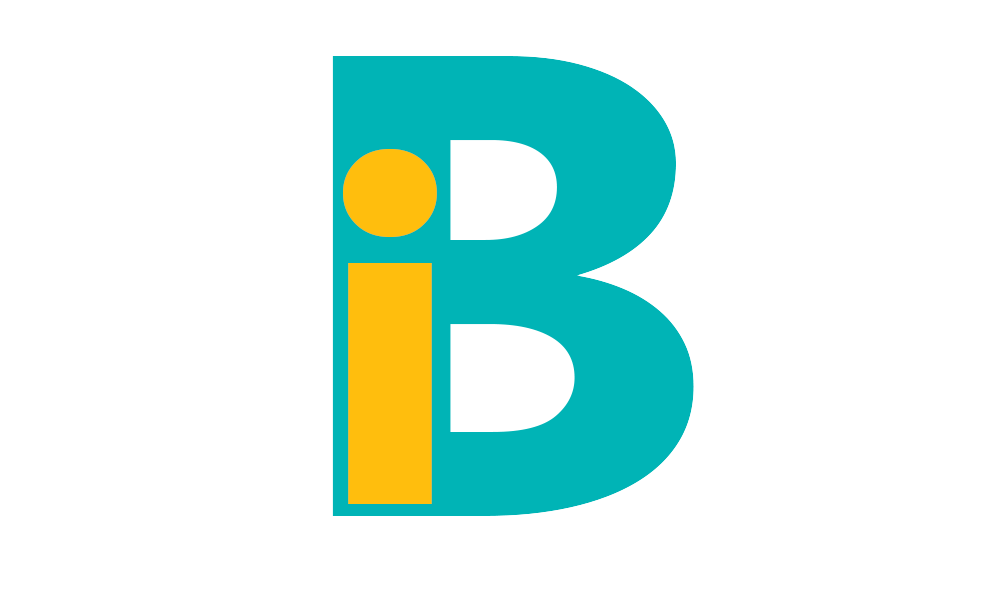




-1.png?width=600&name=Email%20Graphic%20Virtual%20Conferences%20(4)-1.png)
.png?width=742&name=Screenshot%20(4).png)
-1.jpg?width=235&name=more%20(87)-1.jpg)
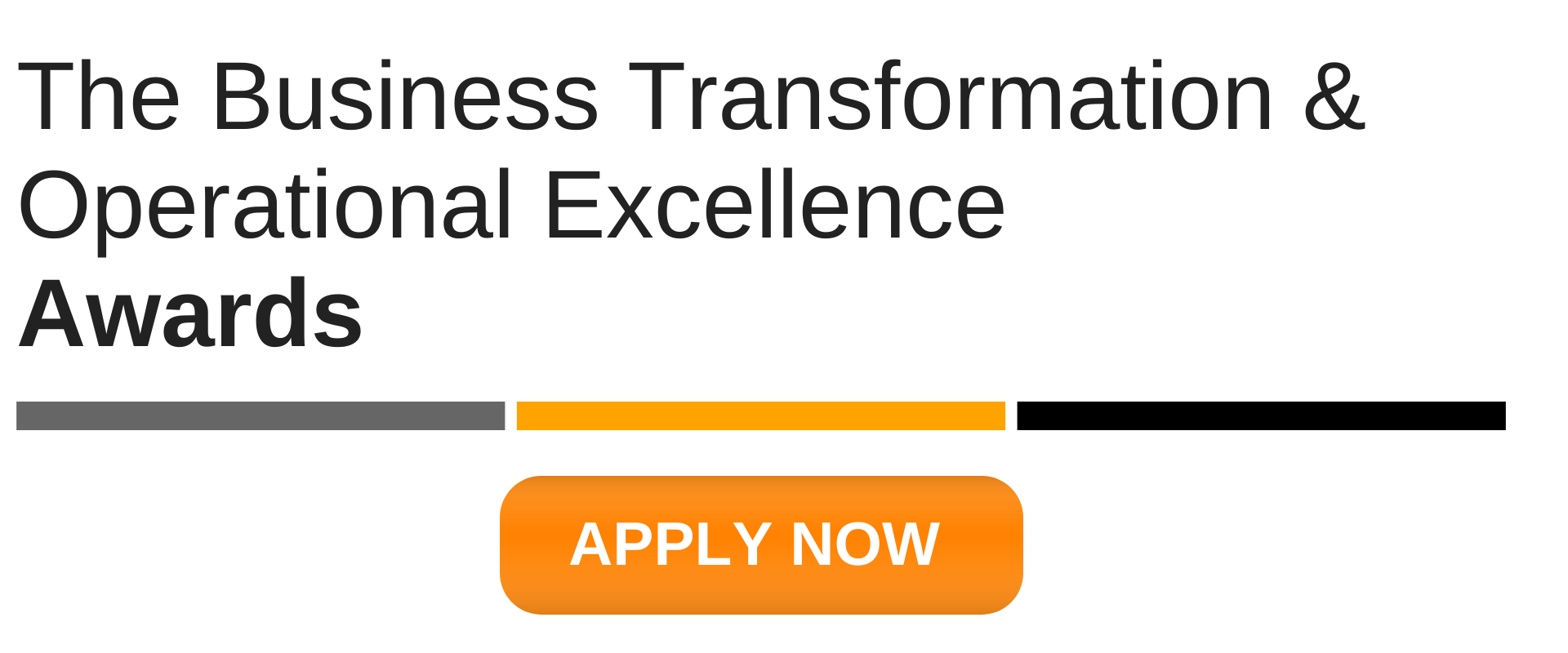

-2.png)
-2.png)
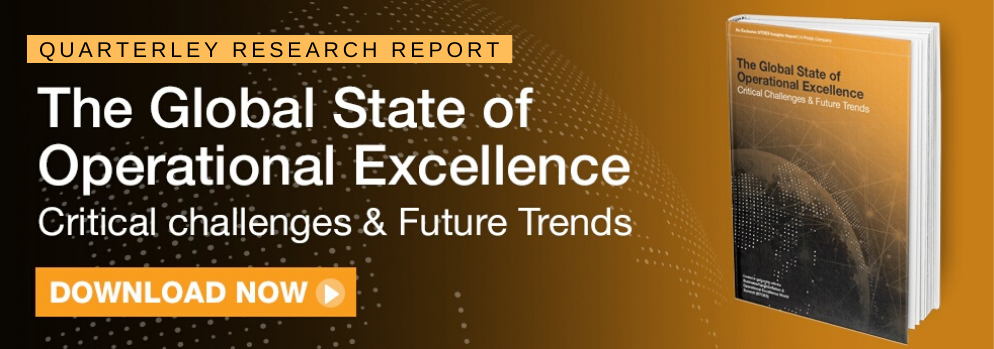

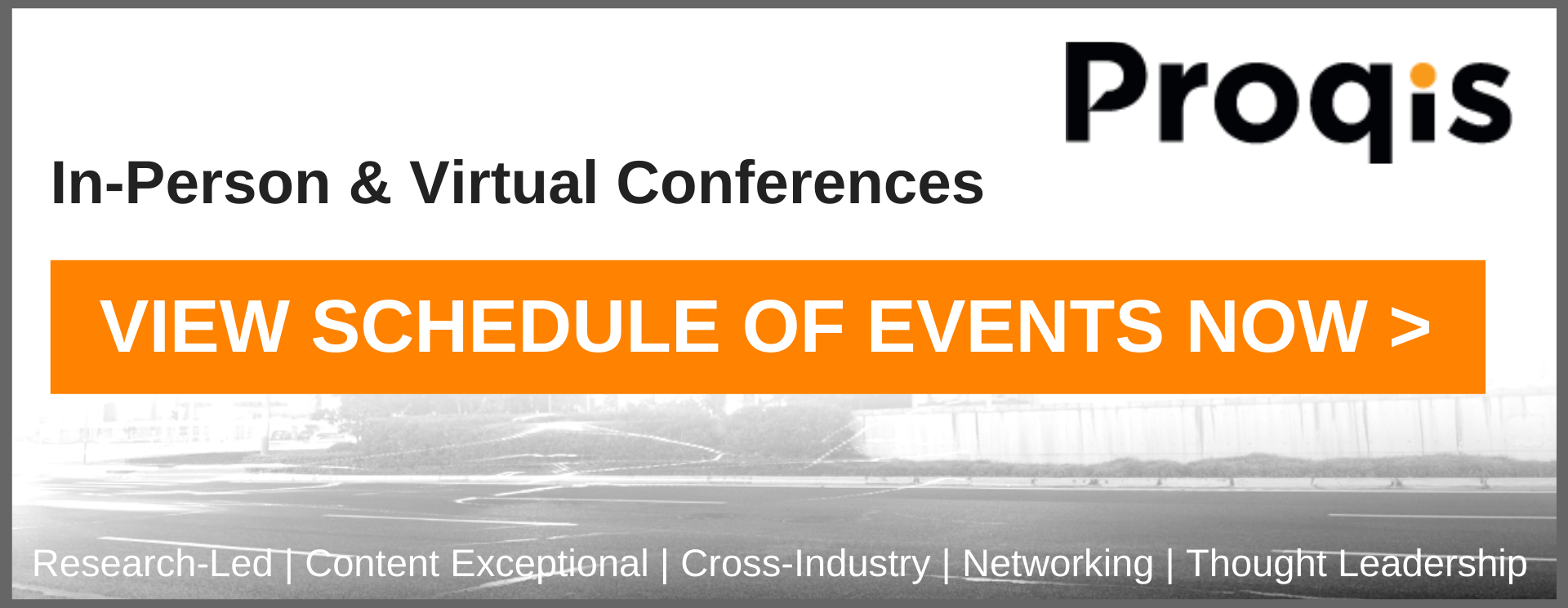


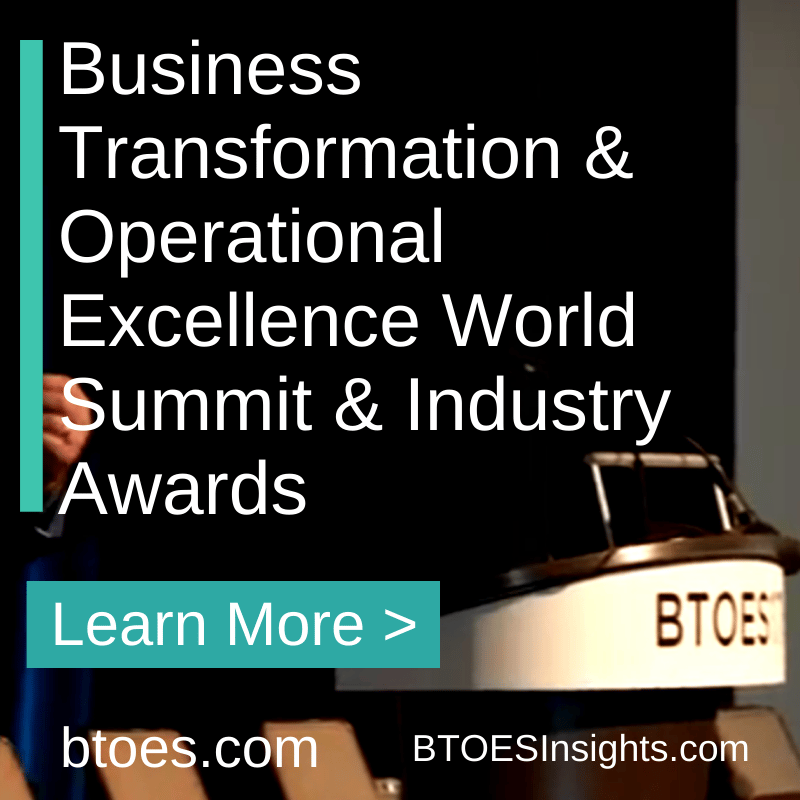
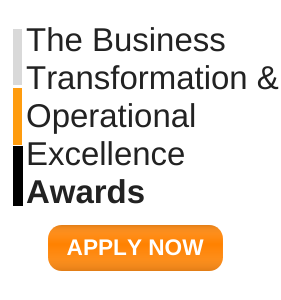
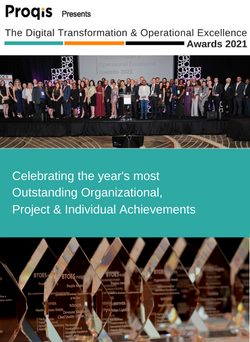
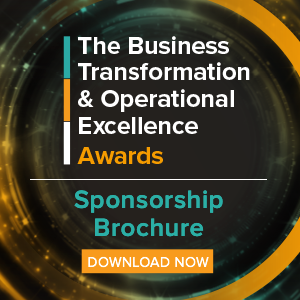

%20(1)%20(1).png?width=1410&name=Add%20a%20heading%20(8)%20(1)%20(1).png)



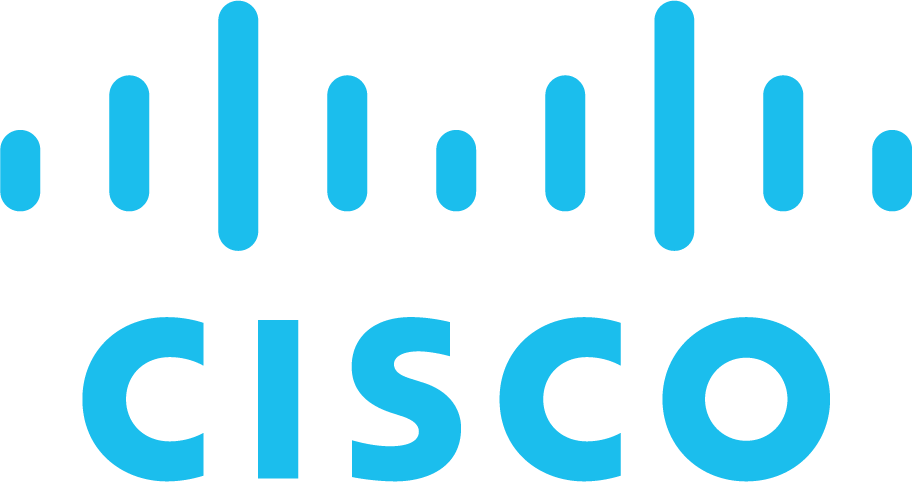
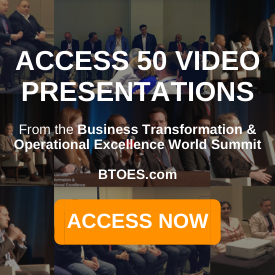
.png)
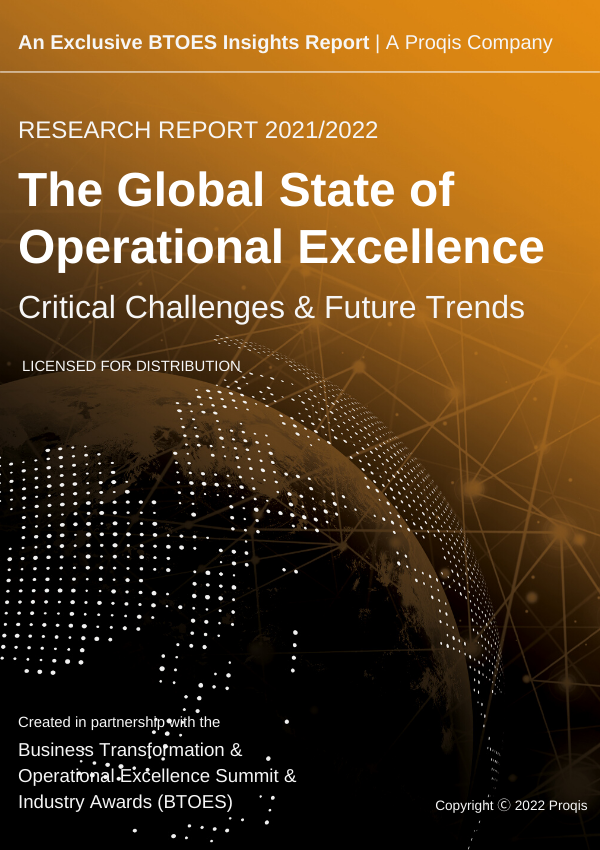
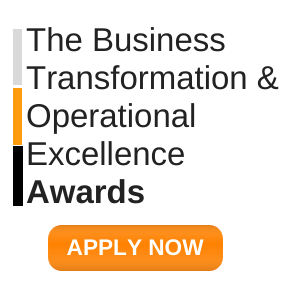
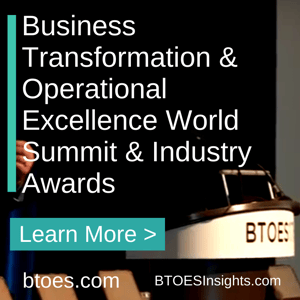

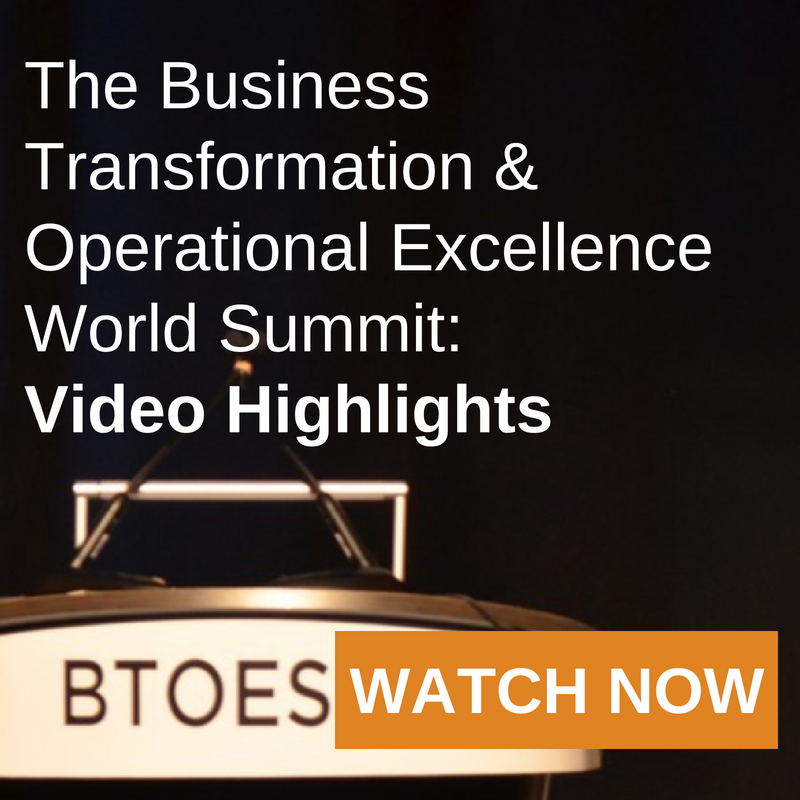

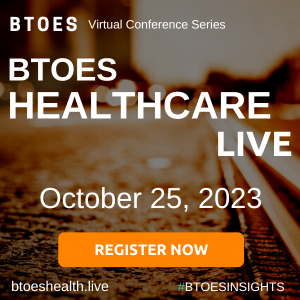
-1.png?width=300&name=ATTENDEE%20-%20Proqis%20Digital%20Event%20Graphics%20(2)-1.png)
-1.png?width=300&name=ATTENDEE%20-%20Proqis%20Digital%20Event%20Graphics%20(1)-1.png)
